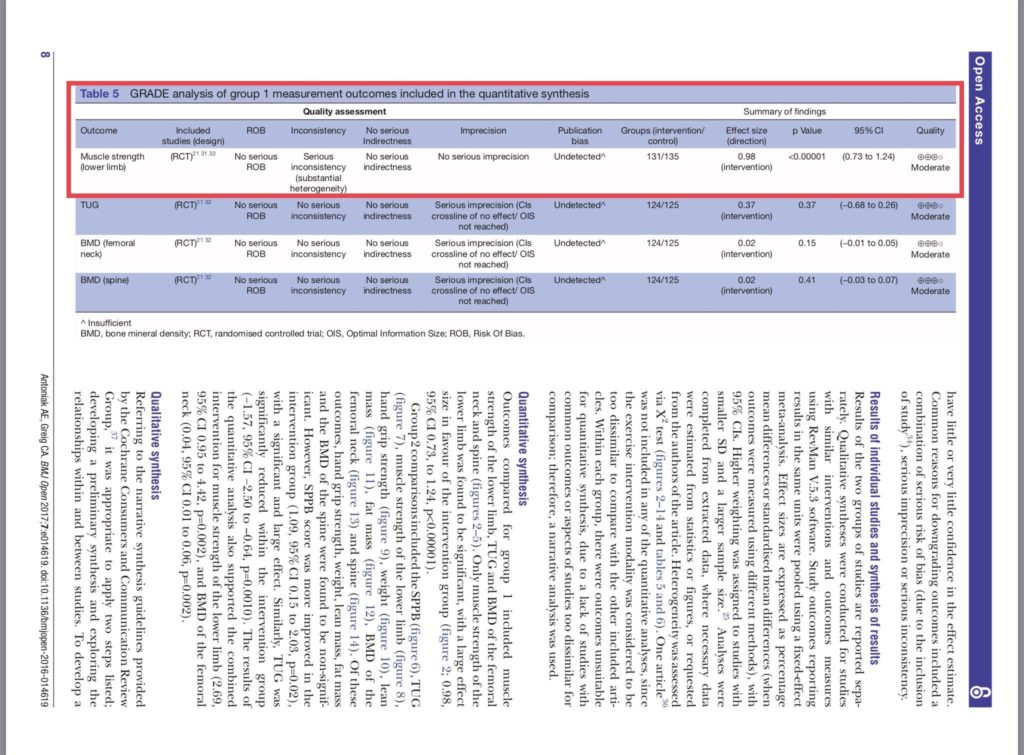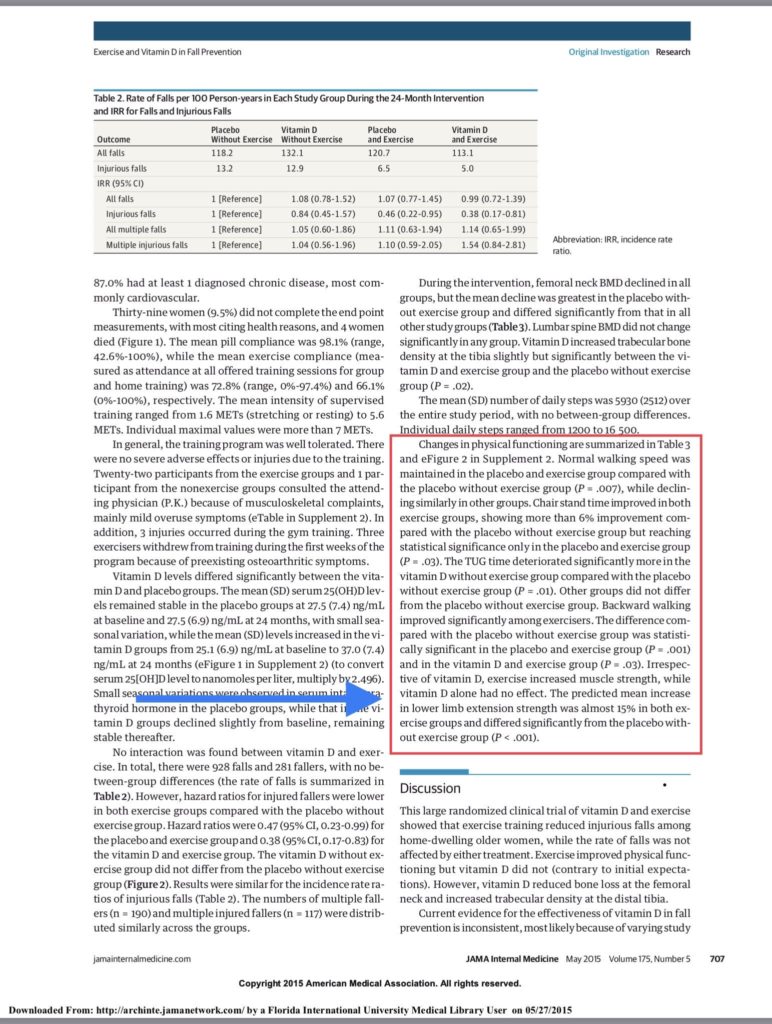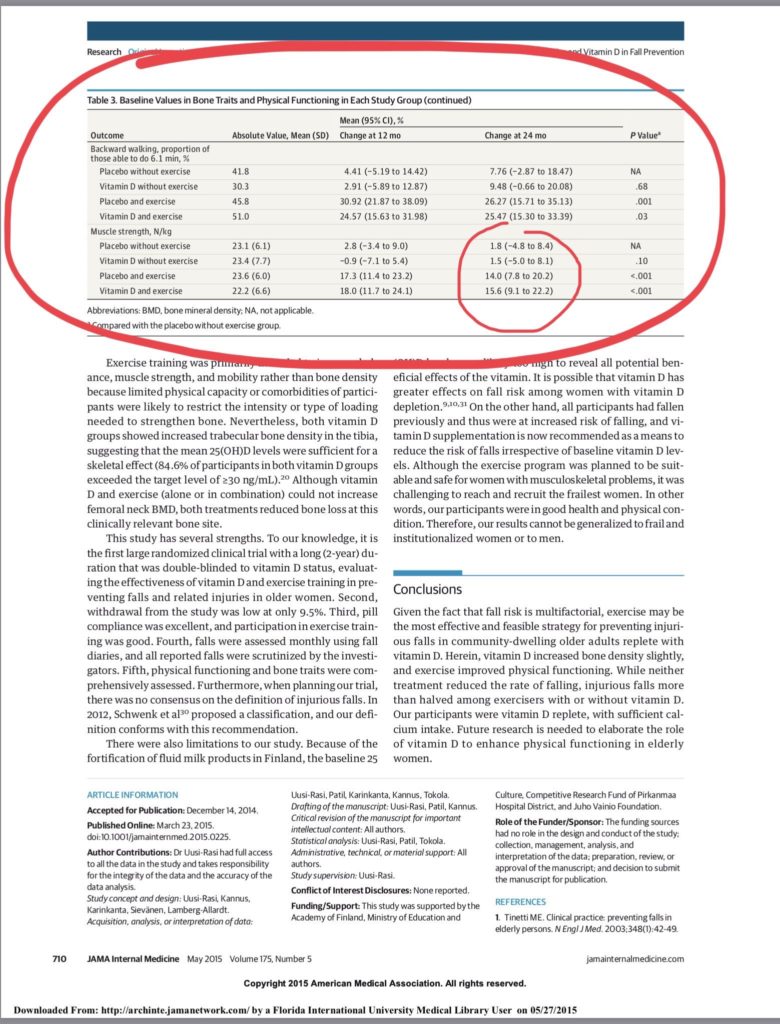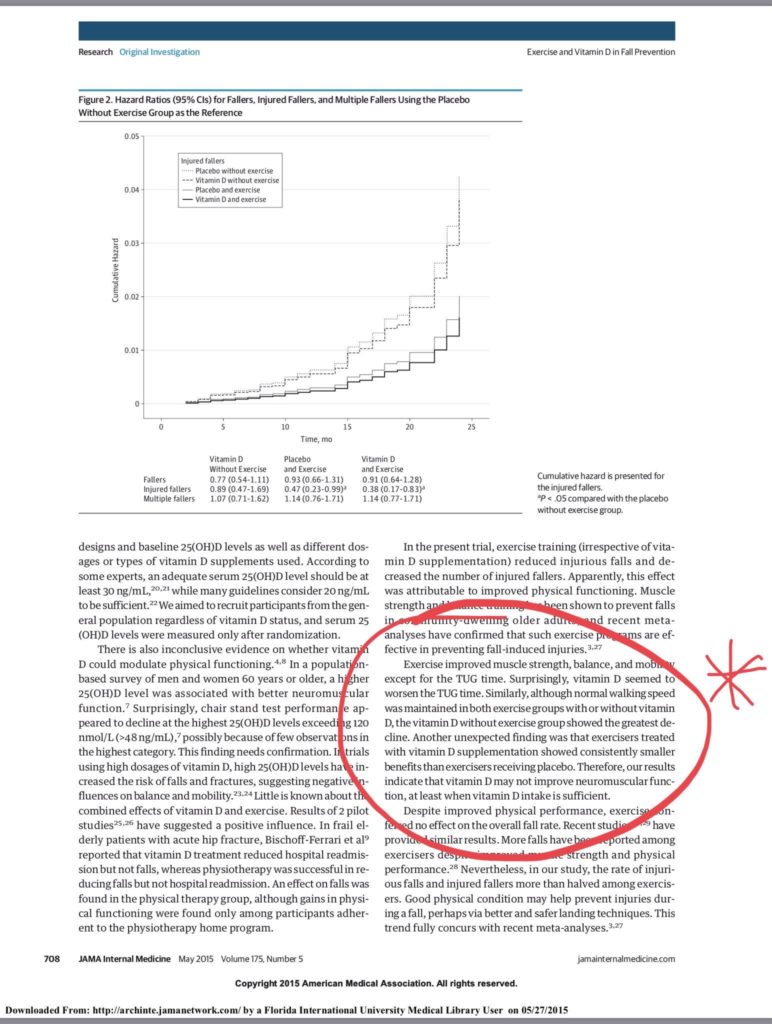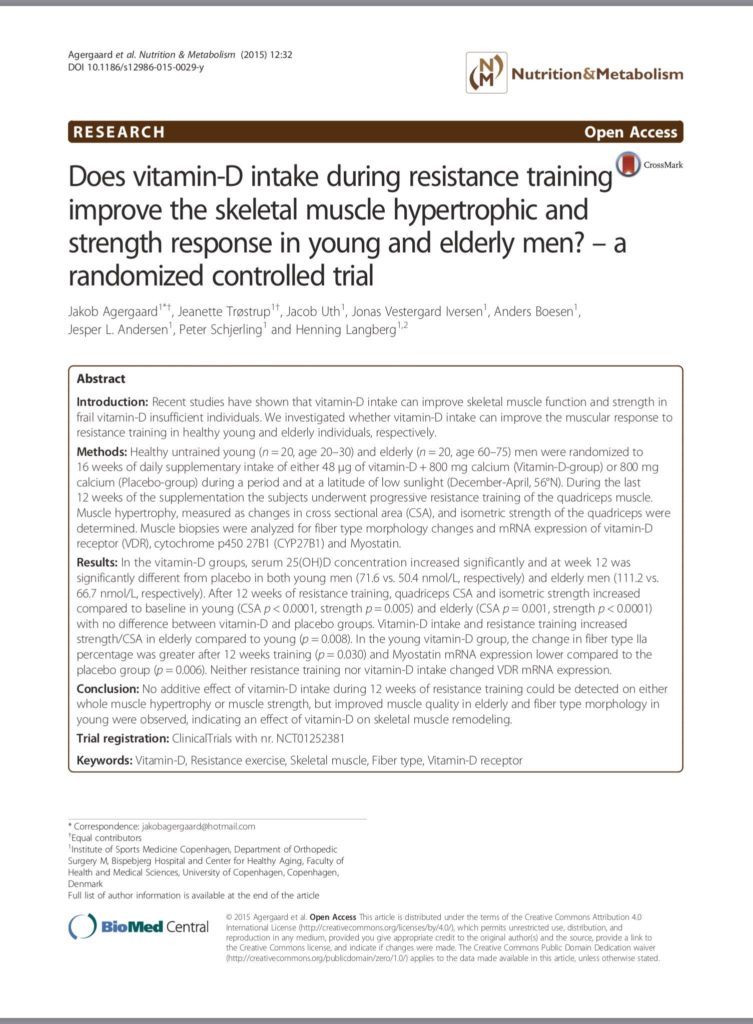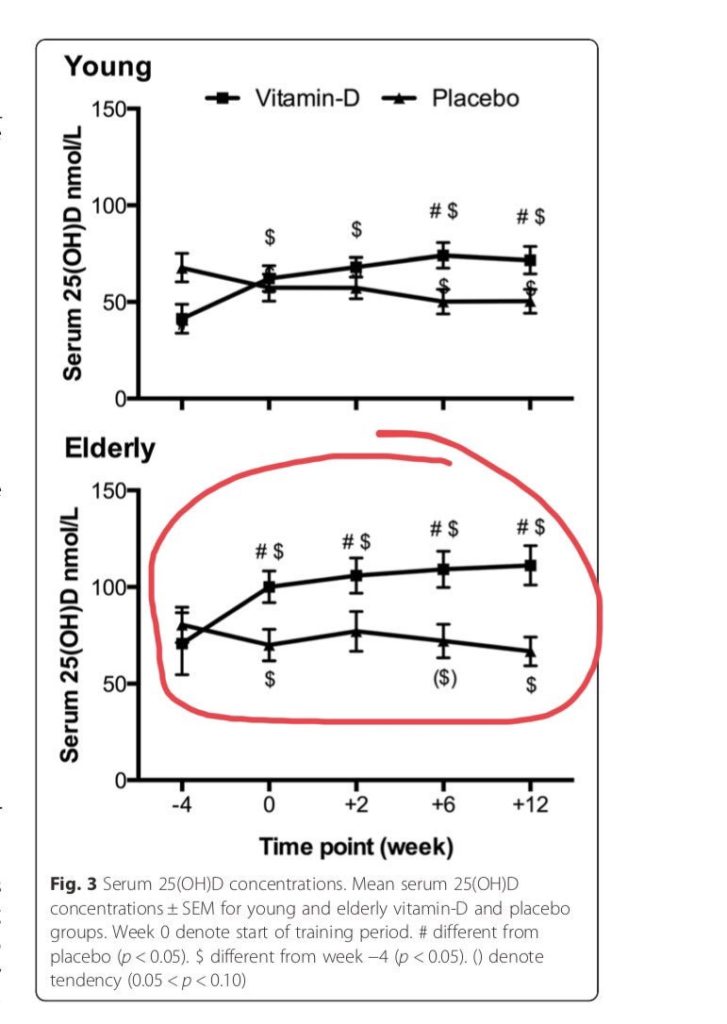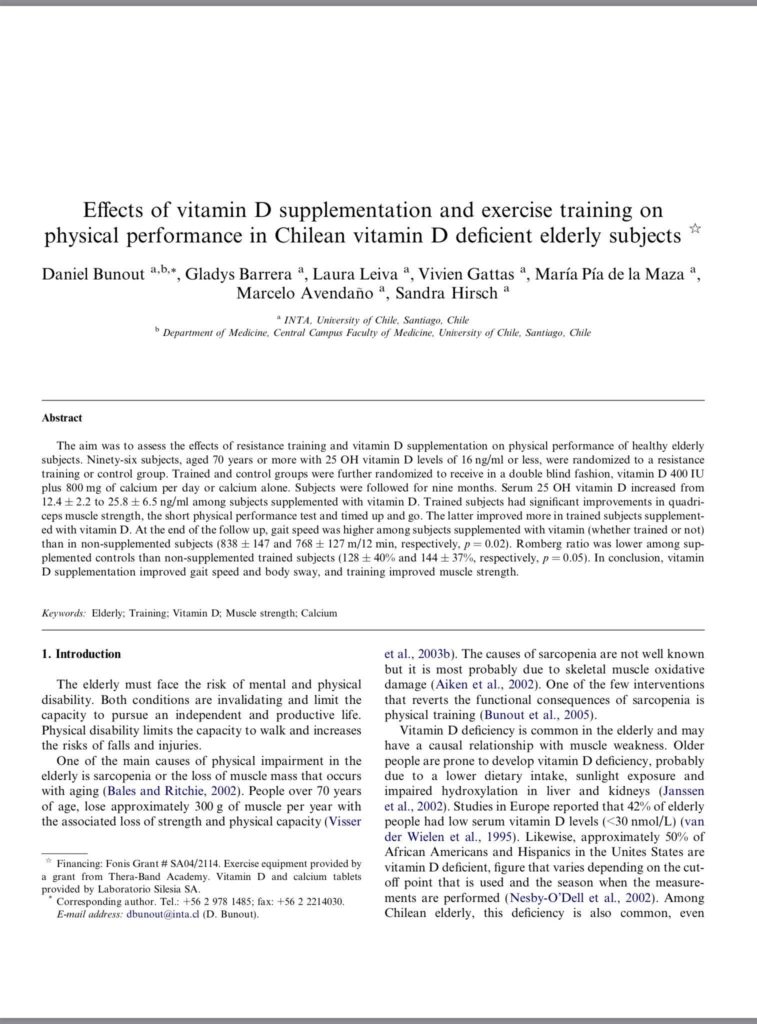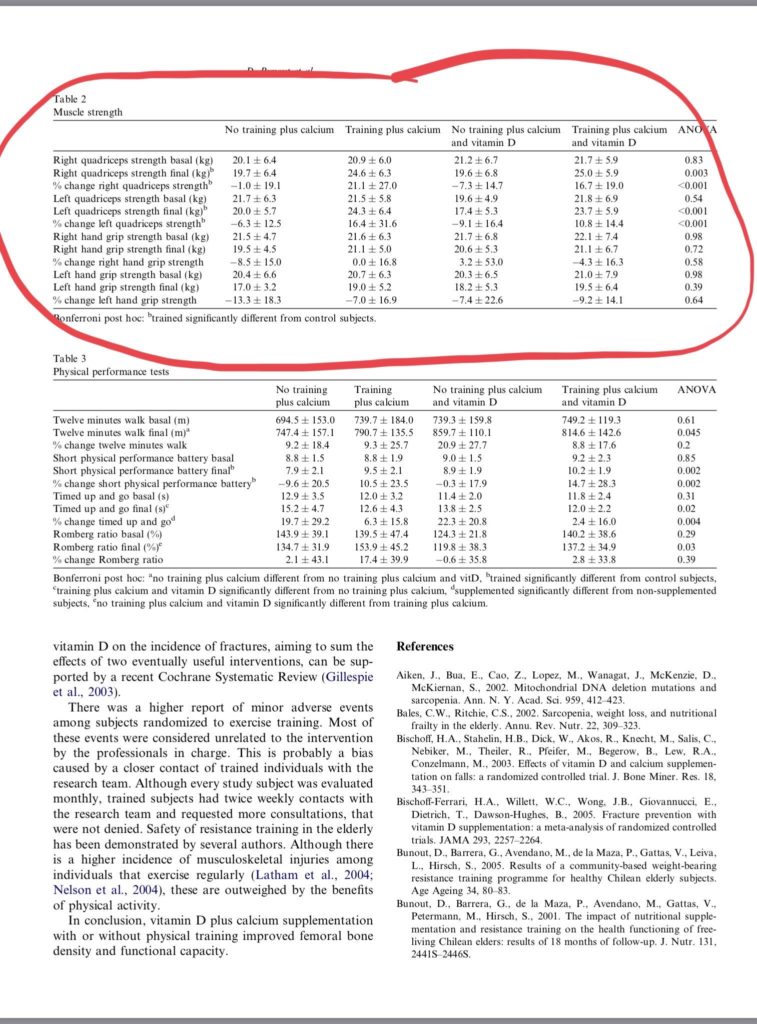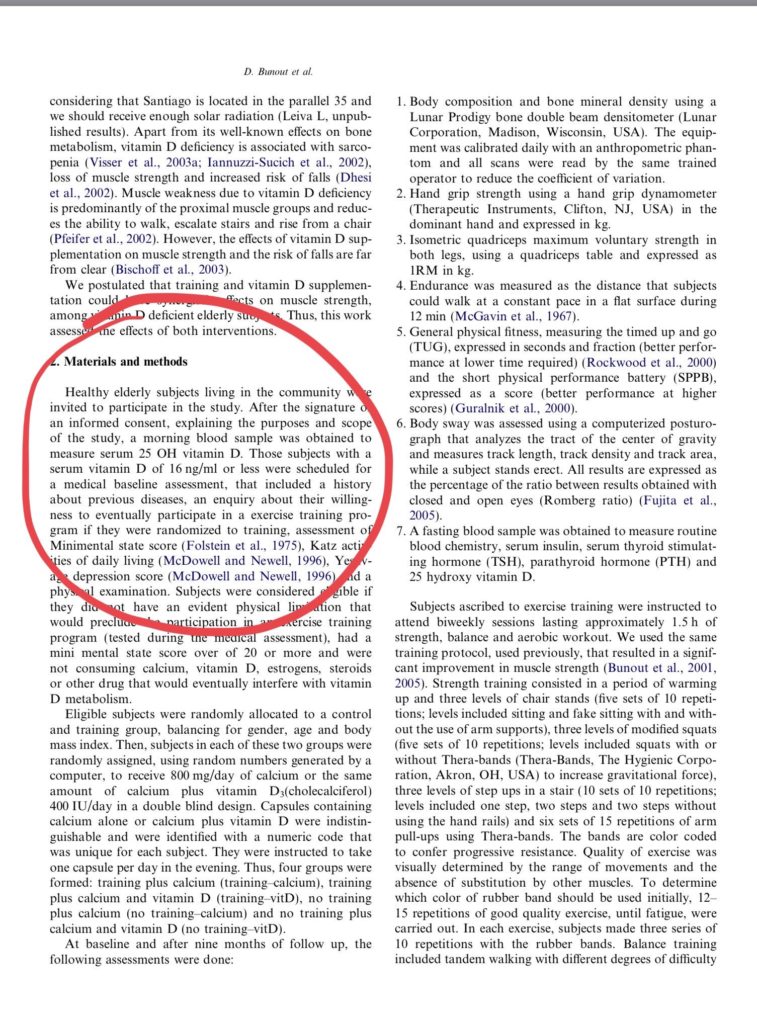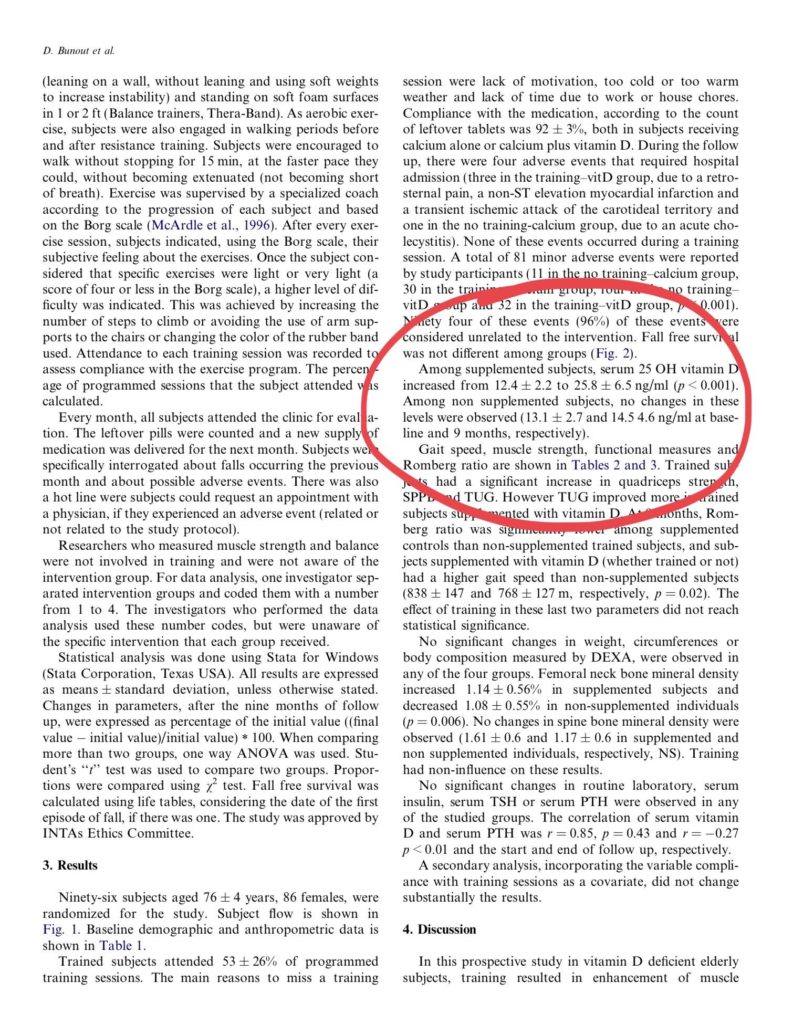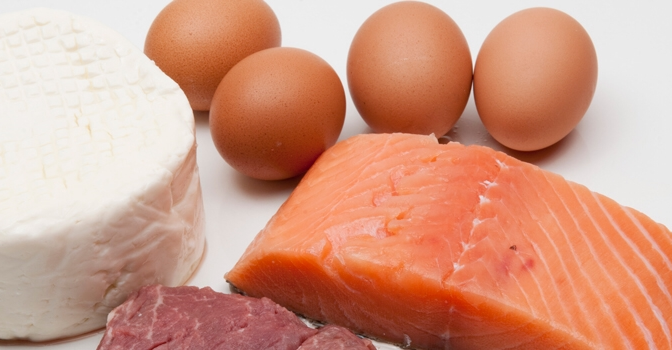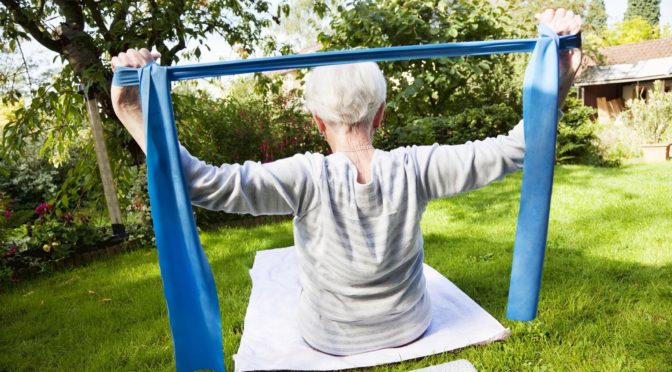In a recent meta-analysis (see here), vitamin D was found to provide an additive benefit for older adults partaking in resistance training (RT). In other words, when compared to older adults taking a placebo, significantly greater gains in muscle strength were achieved in those supplemented with vitamin D. However, upon closer analysis several issues become obvious that are difficult to reconcile. The following discusses some of these issues inherent in the findings of this paper (see below).
The group 1 analysis of 3 trials finds vit D supplementation augments muscle strength of the lower limbs, SMD=0.98; see fig 2 below. (Please click on any image to open and make larger for viewing).
…but what is with the scale used for the x-axis; it seems all wrong…..all the green squares sit nicely on zero……. and where is my forest plot with 95% CI bars and my black triangle to show overall SMD?
As a crude comparison & to put this in context, Chilibeck et al (2017) found SMD=0.25 for the effect of creatine supplementation on lower body strength during RT in older adults. Perhaps the most effective supplement available? Could vit D really be that much better?
The authors acknowledge serious inconsistency with substantial heterogeneity (see table 5) for this outcome measure and even suggest that maybe: “….these studies were unsuitable for comparison”, but conclude nonetheless that there is: “tentative support for the additive effects of RT and vit D supplementation for the improvement of muscle strength in older adults”, including those replete in Vit D.
The Uusi-Rasi et al (2015) trial was weighted heavily (75%) and rightly so being the most well designed, largest & longest RCT to date. In fact SMD of this trial in the group 1 analysis = 1.16. This is very impressive and clinically relevant if accurate and valid. Uusi-Rasi et al (2015) in contrast states: “Irrespective of vit D, exercise increased muscle strength. The predicted mean increase in lower limb extension strength was almost 15% in both exercised groups and differed significantly from the placebo without exercise group.”
“Another unexpected finding was that exercisers treated with vit D supplementation showed consistently smaller benefits than exercisers receiving placebo……our results indicate that vit D may not improve neuromuscular function, at least when vit D intake is sufficient.” The largest and longest RCT to date found no additional – and perhaps even attenuated – benefit of vit D supplementation in replete resistance-training older adults, which is at complete odds to the meta-analysis.
The Agergaard et al (2015) trial showed no additional benefit of vit D on muscle strength in older adults (vit D replete). Sample size for older adults was very small also and weighted acccordingly in the meta.
….and Bunout et al (2006) found that combined calcium/vit D supplementation was no more effective than calcium-only supplementation in older adults undergoing RT but – and this is a critical point of difference to the other 2 studies.
– all participants were arguably vit D insufficient; to be included participants had to be 16 ng/ml (40 nmol/L) or less for serum 25(OH)D. An important point that was missed by the authors of the meta-analysis (see further below).
These 3 studies included in the group 1 analysis of muscle strength of the lower limbs were identified as “all participants took part in RT and the intervention arm was supplemented with vit D (describing the additive effect of vit D supplementation when combined with RT)”
However, Bunout et al (2006) did not include a RT group that received a ‘true’ placebo. Both exercising groups in this trial received supplementation of some sort.
….one group was supplemented with vit D & calcium (intervention), the other exercising group were supplemented with calcium-only (control). “……vit D was given along with calcium in this trial, since a low calcium intake can limit the effects of the vitamin.
To isolate the effect of the vitamin, controls for supplementation received calcium also.” However results showed there were no statistically significant differences between these groups in baseline to final percentage change for right and left quadriceps strength, and right and left hand grip strength. In fact, the RT plus calcium-only group achieved better mean numerical responses in strength (non-significant) when compared to the RT plus vit D/calcium group (see table 2)……..so is it somewhat unusual that such a large SMD was found in the meta favouring the group that received vit D?
The authors state in the meta discussion that: “Interestingly, although the studies included within group 1 did not specify serum 25(OH)D levels as inclusion/exclusion critieria, baseline and postintervention serum 25(OH)D were within the ‘sufficient’ range (>30 nmol/L).”
Now there are 2 issues with this statement. Firstly, it is false that all studies included in group 1 did not specify serum 25(OH)D levels as inclusion/exclusion criteria. Bunout et al (2006) in fact did just that and specified a cut-off point for inclusion.
Subjects were screened and included only if their serum 25(OH)D levels were 16 ng/ml (40 nmol/L) or less. Secondly, mean baseline serum 25(OH)D of the vit D supplemented group in Bunout et al (2006) was 12.4 ng/ml (30 nmol/L) and many experts would propose that serum 25(OH)D of around 30 nmol/L in older adults is insufficient. It is also worth noting that Vit D status for participants of each of the 3 studies varied considerable and could possibly confound the meta.
After reviewing the 3 trials very carefully (used in the group 1 analysis of Antonia and Greig 2017), the finding that vit D supplementation significantly augments muscular strength of older adults doing RT, including those replete for vit D (SMD=0.98), is perplexing.
It is plausible and there is some evidence that vit D supplementation may augment strength of exercising older adults that have insuffient or deficient levels of vit D [serum 25(OH)D <50 nmol/L & <25 nmol/L] but such data is as yet not forthcoming in older adults performing RT
After reviewing Antoniak & Greig (2017) in which vit D supplementation significantly enhances strength in older adults doing RT, I cannot but view the findings as an artefact possibly generated by the unresolvable and substantial heterogeneity that was detected in the analysis.
The conclusion of tentative support for the ergogenity of vit D in older RT adults, irrespective of serum 25(OH)D status, is therefore premature and unsubstantiated.
For local Townsville residents interested in FitGreyStrong’s Exercise Physiology services or exercise programs designed to improve muscular strength, physical function (how you move around during the day) and quality of life or programs to enhance athletic performance, contact FitGreyStrong@outlook.com or phone 0499 846 955 for a confidential discussion.
For other Australian residents or oversees readers interested in our services, please see here.


